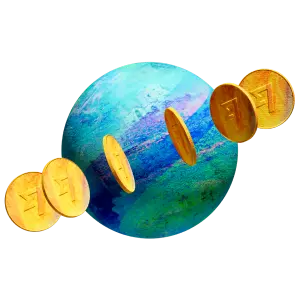加元 (CAD)
加元是加拿大的官方货币。它是全球第五大储备货币。加元的代码为 CAD,符号为 $。该货币由加拿大银行发行,并由位于渥太华的加拿大银行纸币公司印刷。加元是一种法定货币。
货币名称
加元
货币符号
C$
| 名称 | 加拿大元 (CAD) |
|---|---|
| 符号 | C$ |
| 次要单位 | 分(1/100 元) |
| 次要单位符号 | ¢ |
| 常用纸币 | $5, $10, $20, $50, $100 |
| 常用硬币 | 1¢, 5¢, 10¢, 25¢, $1, $2 |
| 中央银行 | 加拿大银行 |
| 用户 | 加拿大 |
加拿大元 (CAD) 的资料表
加元在外汇市场交易最活跃的货币中排名第五,吸引着机构和个人的极大兴趣。加元通常被称为 Loonie、Buck、Huard 和 Piastre(法语),在几家中央银行中拥有储备货币的地位。它被认可作为商品货币源于加拿大的大量原材料出口。
文化象征
加拿大纸币上装饰着国家标志和重要意象,描绘了该国的自然美景、历史人物和土著遗产。每张纸币都讲述了一个故事,反映了加拿大的多元文化和自然景观。
由加拿大银行监管
加元的稳定性和价值由加拿大银行监管。加拿大货币的出现可以追溯到 17 世纪 60 年代初,当时法国定居者抵达,将硬币引入该地区。纸币最初由蒙特利尔银行于 1821 年发行,并迅速成为一种主要的交易方式。
1841 年,作为英国统治下的加拿大省,引入了一种称为加拿大磅的货币。不过,到 1858 年,加元取代加拿大磅,并将其价值向美元看齐。在此过渡期间,美元和英国金币都被接受作为加拿大境内的法定货币。
继加拿大联邦之后,政府开始实行货币十进制,在加拿大自治领发行了一套新的硬币。1934 年加拿大银行的成立标志着纸币的诞生,一年后开始发行。值得注意的是,第一枚加元硬币于 1987 年进入流通,随后在 1996 年推出了两元硬币,通常被称为 Toonie。2011 年,加拿大中央银行推出了一系列用聚合物材料印刷的新型纸币,这是一项重大进展。
